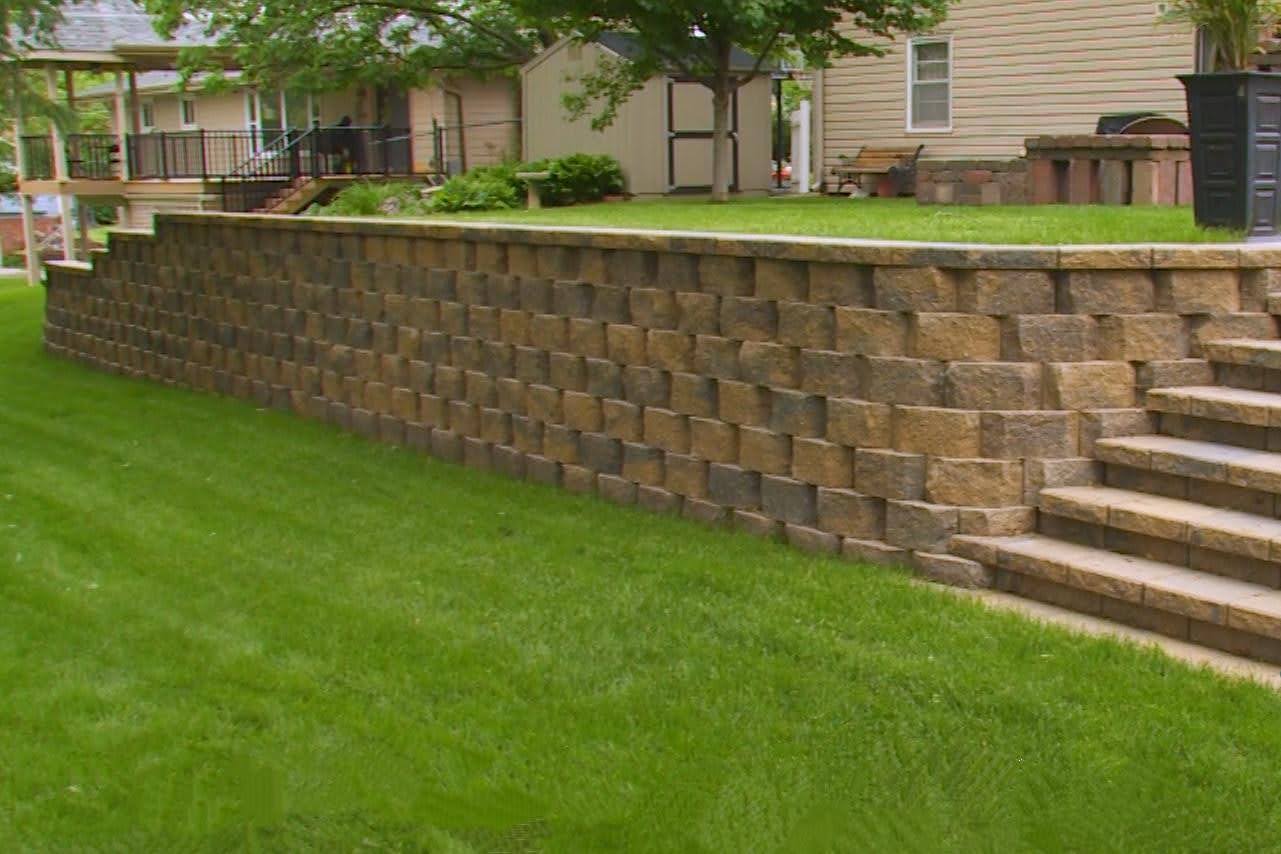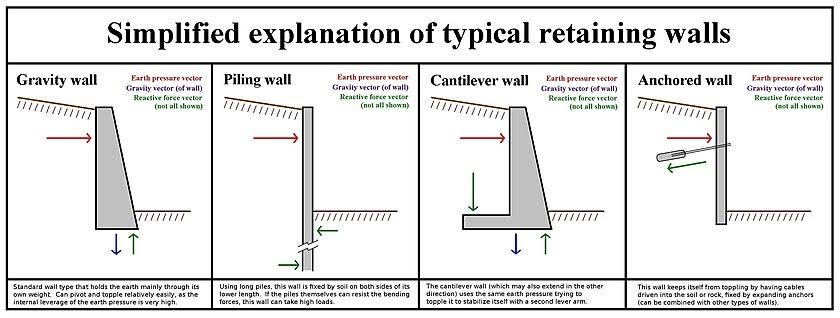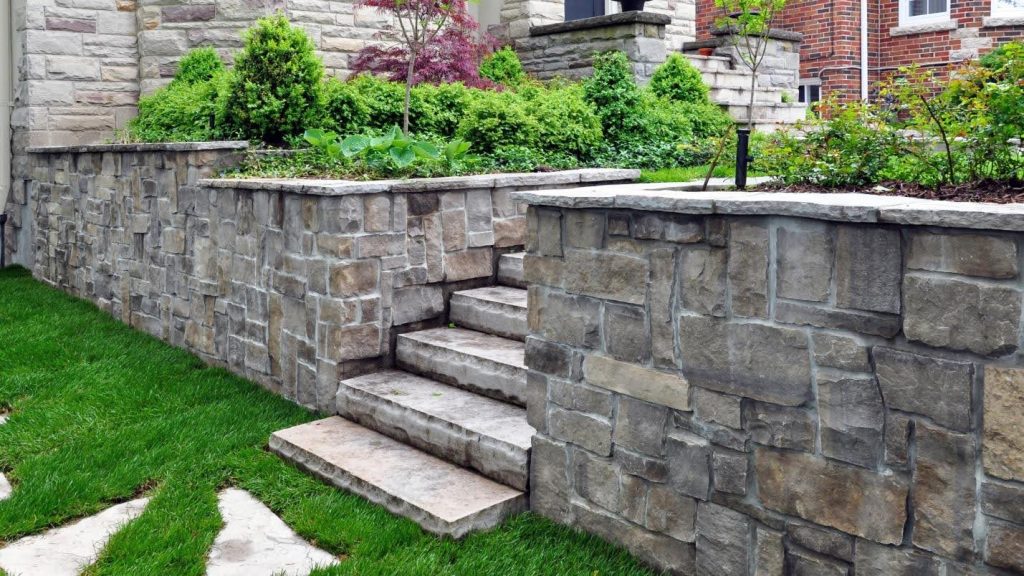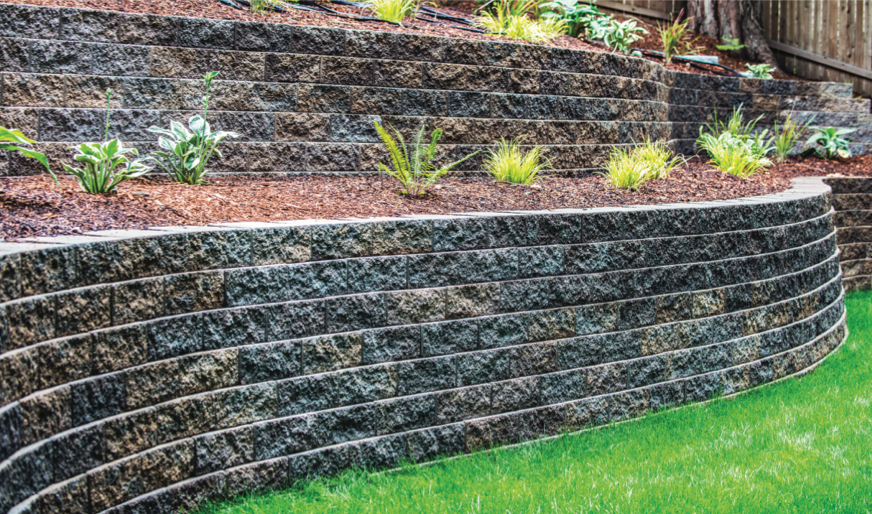
What is a Retaining Wall?
A retaining wall is designed to hold in place a mass of earth or the like, such as the edge of a terrace or excavation. Retaining walls in the Northville & Plymouth area is a structure built to hold back soil or other materials when there’s a change in ground elevation. They’re often used to create terraces or support excavations. Retaining walls are relatively rigid structures designed to support soil laterally, allowing it to be retained at different levels on either side. These walls are engineered to hold soil to a slope steeper or more vertical than it would naturally maintain.
Retaining walls are commonly employed to separate soils at varying elevations, particularly in areas with inconveniently steep terrain where significant landscape shaping is necessary. This can include applications such as hillside farming or constructing roadway overpasses. When a retaining wall is designed to hold back soil on one side and water on the other, it is referred to as a seawall or bulkhead.
Types of Retaining Walls:
- Cantilever Retaining Walls: Freestanding walls without lateral support at the top.
- Basement Walls: A type of retaining wall that supports the foundation.
How Retaining Walls Work:
- Soil Pressure: Retaining walls in the Northville and Plymouth Michigan area resist the lateral pressure of soil, which increases with depth.
- Drainage: Proper drainage behind the wall is crucial to prevent hydrostatic pressure and maintain stability.
- Design Considerations: Walls must be designed to withstand overturning, sliding, and excessive foundation pressure.
Key Factors in Retaining Wall Design:
- Soil Properties: The type of soil and its angle of repose determine the wall’s design.
- Lateral Earth Pressure: The force exerted by the soil on the wall.
- Hydrostatic Pressure: Water pressure behind the wall can increase stability risks.
- Drainage: Effective drainage systems prevent water buildup.
Building Codes and Safety:
- International Building Code: Sets standards for retaining wall design and safety factors.
- Stability: Walls must be designed to resist overturning, sliding, and excessive pressure.
Conclusion:
Retaining walls are essential structures for maintaining stable ground levels. Understanding their design principles and the importance of proper drainage is crucial for ensuring their safety and longevity.

Understanding Retaining Wall Types: A Comprehensive Guide
A retaining wall in Plymouth and Northville Michigan area is designed to hold in place a mass of earth or the like, such as the edge of a terrace or excavation. The structure is constructed to resist the lateral pressure of soil when there is a desired change in ground elevation that exceeds the angle of repose of the soil.
Retaining Wall Construction: A Closer Look
Retaining walls are essential structures for holding back soil and creating stable slopes. Let’s explore the different types of retaining walls and their construction methods.
Gravity Walls:
- Depend on Mass: Rely on their weight (stone, concrete) for stability.
- Battered Design: Often have a backward lean for improved support.
- Common Materials: Stone, segmental concrete units, gabions (wire baskets filled with rocks), crib walls (precast concrete or timber cells).
Cantilevered Walls:
- T-Shape: Made of reinforced concrete or mortared masonry.
- Cantilevered Load: Transfer horizontal pressure to vertical pressure on the footing.
- Buttresses and Counterforts: These can be added for extra strength.
Diaphragm Walls:
- Very Stiff and Watertight: Ideal for urban construction.
- Expensive: But save time and space.
- Construction: Formed by excavating a trench and installing reinforced concrete panels.
Sheet Pile Walls:
- Driven into the Ground: Made of materials like steel, vinyl, or wood.
- Anchoring: Require tie-backs or deadmen for stability.
- Noise Considerations: Avoid using pile drivers in noise-sensitive areas.
Bored Pile Walls:
- Excavated and Reinforced: Involve drilling piles and adding reinforcement.
- Less Noise: A good alternative to sheet pile walls in noise-sensitive areas.
Anchored Walls:
- Cables or Stays: Use anchors driven into the ground for additional support.
- High Loads: Ideal for areas with significant pressure on the wall.
Conclusion:
Choosing the right retaining wall type in Plymouth and the Northville Michigan area depends on factors like soil conditions, load requirements, and aesthetic preferences. Understanding the construction methods and their advantages can help you make an informed decision for your project.


Alternative Retaining Wall Techniques: Beyond Traditional Walls
Innovative Approaches to Retaining Walls
While traditional gravity and cantilevered walls are common, there are several innovative techniques for retaining soil:
1. Soil Nailing:
- Reinforcement: Involves inserting steel bars into the soil to strengthen it.
- Grouting: Bars are secured with grout for stability.
- Facing: A rigid or flexible facing can be added for aesthetics.
2. Soil Strengthening:
- Gabion Walls: Wire mesh cages filled with stone for added stability and drainage.
- Mechanically Stabilized Earth (MSE): Uses geosynthetic mats for reinforcement.
- Cellular Confinement Systems (Geocells): Provide structural stability and flexibility.
3. Combined Approaches:
- MSE Walls with Facing: Often use segmental retaining walls for facing.
- Geocell Walls: Can be combined with other techniques for added support.
Benefits of Alternative Techniques:
- Increased Stability: These methods can handle steeper slopes and higher loads.
- Cost-Effectiveness: Can be more economical than traditional walls in certain situations.
- Versatility: Offer a range of options for different soil conditions and aesthetic preferences.
- Environmental Benefits: Some techniques, like green walls, can improve the environment.
Conclusion:
By exploring these alternative retaining wall techniques, you can find the best solution for your project based on factors like soil conditions, budget, and desired aesthetics. Consider consulting with a geotechnical engineer for expert advice.

